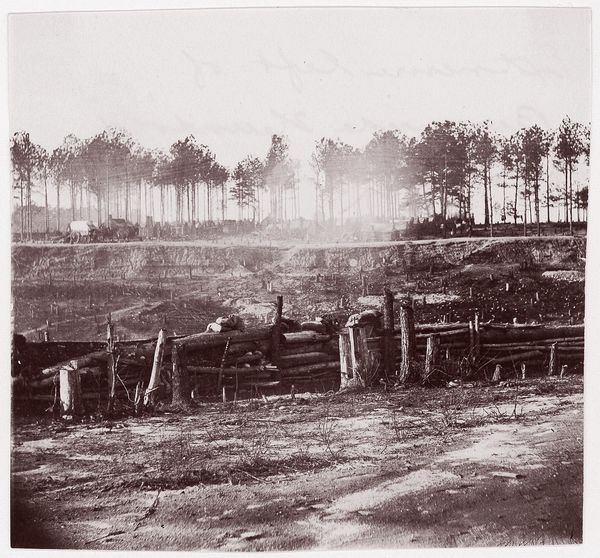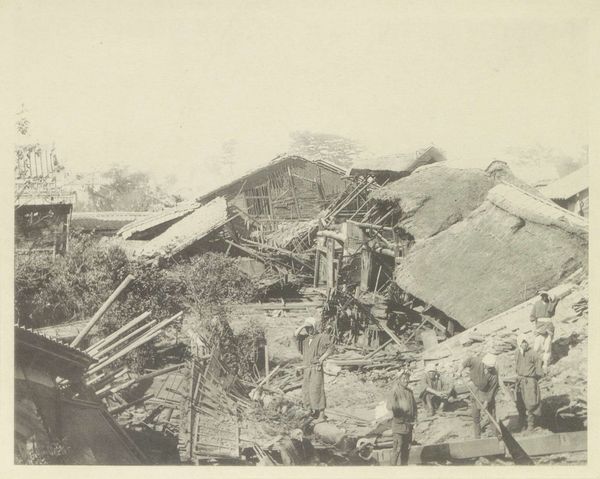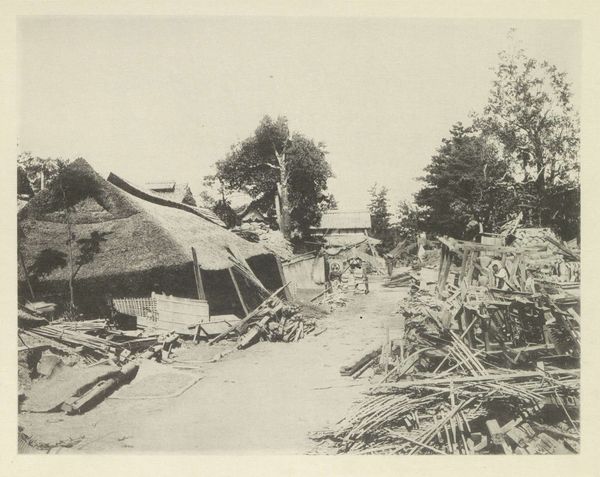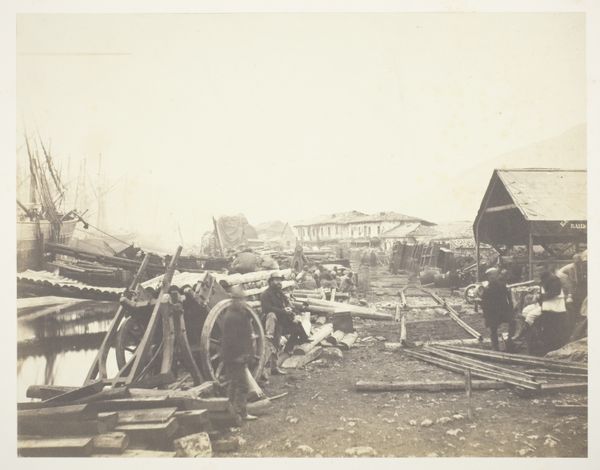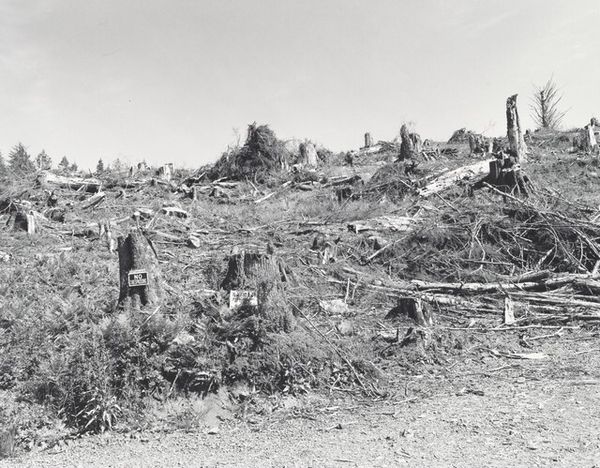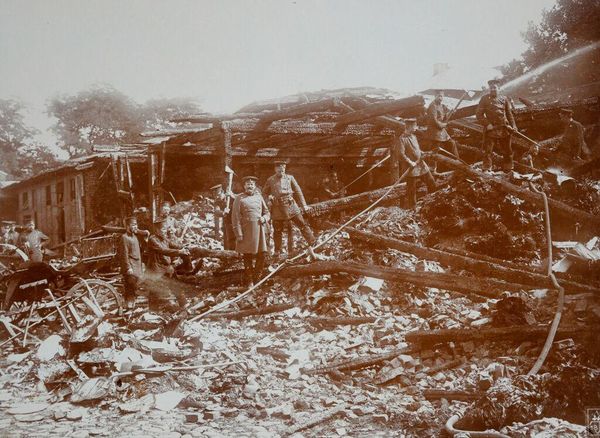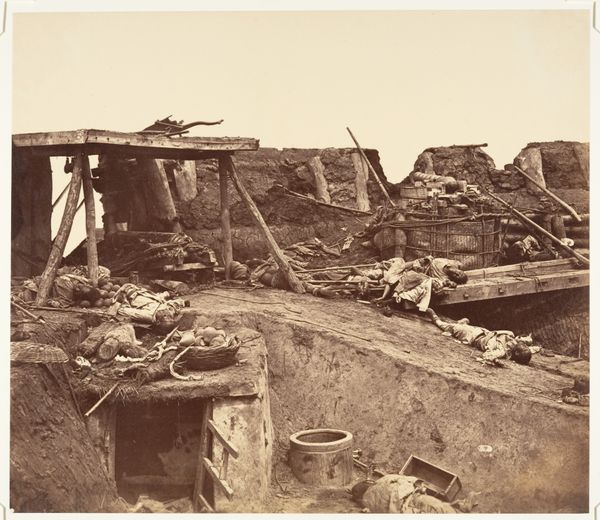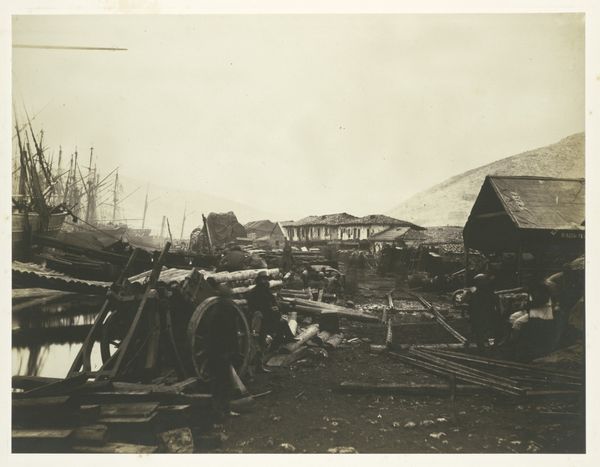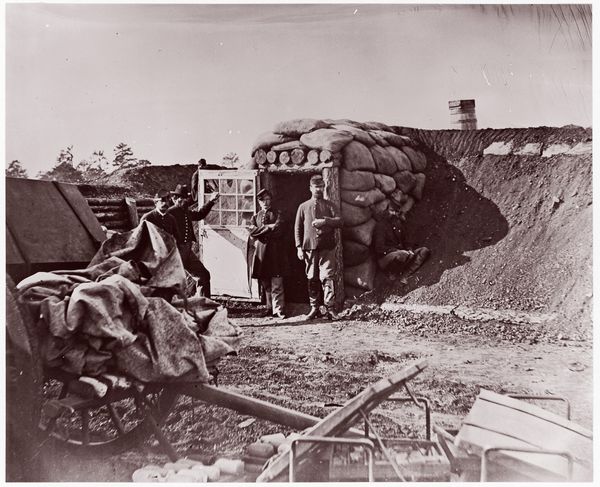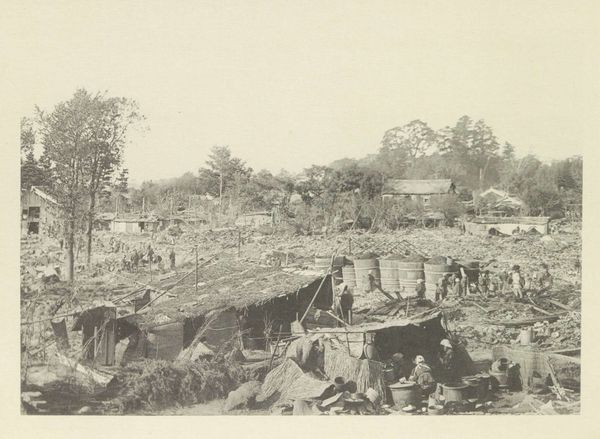
photography, gelatin-silver-print, albumen-print
#
black and white photography
#
war
#
landscape
#
outdoor photo
#
photography
#
gelatin-silver-print
#
monochrome photography
#
men
#
albumen-print
#
realism
Copyright: Public Domain
Editor: So, this is Andrew Joseph Russell's "Falmouth, Virginia. Abandoned Camp" from 1862. It’s a gelatin-silver print. It strikes me as incredibly desolate. What can you tell me about this image? Curator: The desolate feeling is key. Consider the date: 1862, during the Civil War. Photography served a powerful public role then, documenting a divided nation. Russell, working for the Union Army, wasn't just capturing a scene; he was framing a specific narrative for the public and for posterity. Editor: So, you’re saying the 'abandoned' camp isn’t just a description, it’s a message? Curator: Exactly. What kind of message do you think it's sending? The bare landscape, the seemingly hastily left encampment, what does it suggest about the conflict and those who fought? The politics of imagery are really important here; whose story is being told, and how? Editor: It seems to convey a sense of disorder and the human cost of war – almost like a hastily made decision to abandon everything. Curator: Precisely. The chaos is evident, but is it a fair representation, or a constructed narrative? Were photographs like this used to sway public opinion, justify actions, or perhaps even solicit sympathy? Think about the social context, and the ways in which photography was used as a tool of power during the war. Editor: So much to think about… I hadn’t considered how staged or influenced Civil War photography could have been. I suppose that makes sense. Curator: It's a reminder that even seemingly objective media have biases and intentions behind them. The war wasn’t just fought on the battlefield. Editor: Right, understanding the historical context helps unlock even more meaning in this picture. Thanks, this was incredibly insightful!
Comments
No comments
Be the first to comment and join the conversation on the ultimate creative platform.
